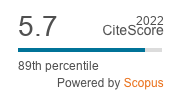Edible insects are a unique food source, requiring extensive allergenic risk assessment before its safe introduction in the food market. In a recent systematic review, crustacean allergic subjects were identified as a risk group due to cross-reactivity mainly mediated by tropomyosin and arginine kinase. Immunologic co-sensitisation to house dust mites (HDM) was also demonstrated, but its clinical significance and molecular mechanisms were unclear. Furthermore, case reports of food allergy to insects were also analysed but lack of contextual information hindered the analysis. The main goal of this review is to provide an update of new information regarding food allergy caused by insects, covering relevant topics considering the guidelines for allergic risk assessment in novel foods. Newly published studies have further confirmed the role of tropomyosin as a cross-reactive allergen between edible insects and crustaceans, although there are some questions regarding the immunoglobulin E (IgE)-reactivity of this allergen in mealworm species. Furthermore, only specific treatments (enzymatic hydrolysis combined with thermal treatments) were able to eliminate IgE-reactivity of edible insects. Primary sensitisation (e.g. to Tenebrio molitor) has also been shown to be an important pathway for the development of food allergies, with responsible allergens being dependent on the route of sensitisation. However, more studies are necessary to better understand the potential of primary sensitisation causing cross-reactivity with other insect species, crustaceans or HDM. The clinical significance and molecular mechanisms involved in cross-reactivity between edible insects and HDM are still unclear, and a major focus should be given to better understand which allergens cause co-sensitisations between HDM and edible insects and what is the risk of HDM-only allergic subjects consuming edible insects. Contextual information about the reported cases of allergic reactions to insects have further demonstrated that insect-rearing workers and subjects with allergic diseases (in particular, food allergy to crustaceans) are the major risk groups.
REVIEW ARTICLE
Edible insects and food safety: allergy
J.C. Ribeiro Related information
1GreenUPorto – Sustainable Agrifood Production Research Centre, DGAOT, Faculty of Sciences, University of Porto, Campus de Vairão, Rua da Agrária 747, 4485-646 Vila do Conde, Portugal.
, B. Sousa-Pinto Related information2MEDCIDS – Department of Community Medicine, Information and Health Decision Sciences, Faculty of Medicine, University of Porto, Rua Dr. Plácido da Costa, 4200-450 Porto, Portugal.
3Laboratory of Immunology, Basic and Clinical Immunology Unit, Faculty of Medicine, University of Porto, Rua Dr. Plácido da Costa, 4200-450 Porto, Portugal.
4CINTESIS – Centre for Health Technology and Services Research, Rua Dr. Plácido da Costa, s/n 4200-450 Porto, Portugal.
, J. Fonseca Related information3Laboratory of Immunology, Basic and Clinical Immunology Unit, Faculty of Medicine, University of Porto, Rua Dr. Plácido da Costa, 4200-450 Porto, Portugal.
4CINTESIS – Centre for Health Technology and Services Research, Rua Dr. Plácido da Costa, s/n 4200-450 Porto, Portugal.
2MEDCIDS – Department of Community Medicine, Information and Health Decision Sciences, Faculty of Medicine, University of Porto, Rua Dr. Plácido da Costa, 4200-450 Porto, Portugal.
4CINTESIS – Centre for Health Technology and Services Research, Rua Dr. Plácido da Costa, s/n 4200-450 Porto, Portugal.
5Allergy Unit, CUF Porto Institute & Hospital, Estrada da Circunvalação 14341, 4100-180 Porto, Portugal.
, S. Caldas Fonseca Related information4CINTESIS – Centre for Health Technology and Services Research, Rua Dr. Plácido da Costa, s/n 4200-450 Porto, Portugal.
5Allergy Unit, CUF Porto Institute & Hospital, Estrada da Circunvalação 14341, 4100-180 Porto, Portugal.
1GreenUPorto – Sustainable Agrifood Production Research Centre, DGAOT, Faculty of Sciences, University of Porto, Campus de Vairão, Rua da Agrária 747, 4485-646 Vila do Conde, Portugal.
, L.M. Cunha Related information1GreenUPorto – Sustainable Agrifood Production Research Centre, DGAOT, Faculty of Sciences, University of Porto, Campus de Vairão, Rua da Agrária 747, 4485-646 Vila do Conde, Portugal.
*Corresponding author: lmcunha@fc.
*Corresponding author: lmcunha@fc.
Journal of Insects as Food and Feed: 7
(5)- Pages: 833 - 847

Published Online: February 23, 2021
Abstract
Keywords: case reports, cross-reactivity, entomophagy, primary sensitisation, tropomyosin
2022 Journal Impact Factor
5.7
source: Journal Impact Factor 2023™ from Clarivate™

Institutional Offers
For institutional orders, please contact [email protected].
Purchase Options
-
G. Daş, M.M. Seyedalmoosavi, K. Schleifer, M. Mielenz and C.C. Metges
-
-
M. Barrett, S.Y. Chia, B. Fischer and J.K. Tomberlin
-
D.G.A.B. Oonincx and M.D. Finke
-
G. Bosch and K.S. Swanson
-
K.B. Barragan-Fonseca, M. Dicke and J.J.A. van Loon
-
A. van Huis
-
M. Tschirner and A. Simon
-
S. Kelemu, S. Niassy, B. Torto, K. Fiaboe, H. Affognon, H. Tonnang, N.K. Maniania and S. Ekesi
-
S. Diener, C. Zurbrügg and K. Tockner
Now available: Open Access JIFF Special Issue as follow-up of the book 'Insects as food and feed: from production to consumption'
read more




